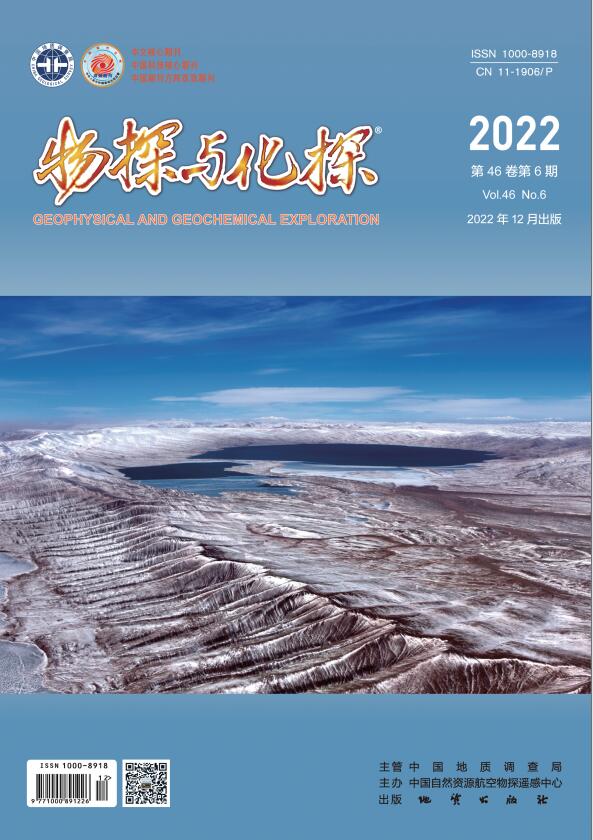| [1] |
Blackwell D D. The thermal structure of the continent crust[M]. Washington D C: AGU, 1971.
Google Scholar
|
| [2] |
Birch F, Roy R F, Decker E R. Heat flow and thermal history in New Englang and New York[J]. Studies of Appalachian Geology, 1968:437-451.
Google Scholar
|
| [3] |
汪集旸, 汪缉安. 辽河裂谷盆地地壳上地幔热结构[J]. 中国科学:B辑, 1986(8):856-866.
Google Scholar
|
| [4] |
Wang J Y, Wang J A. Thermal structure of crust and upper mantle in liaohe rift basin[J]. Science China :Part B, 1986(8):856-866.
Google Scholar
|
| [5] |
李学礼. 江西温泉成因与铀矿化关系研究[J]. 华东地质学院学报, 1992(3):201-220.
Google Scholar
|
| [6] |
Li X L. Study on the relationship between the genesis of hot springs and uranium mineralization in Jiangxi[J]. Journal of East China University of Geosciences, 1992(3):201-220.
Google Scholar
|
| [7] |
Hillis R, Hand M, Mildren S, et al. Genetically related Mo-Bi-Ag and U-F mineralization in A-type granite,Gabal Gattar,Eastern Desert,Egypt[J]. Ore Geology Reviews, 2004, 62:181-190.
Google Scholar
|
| [8] |
李庆阳, 蔡惠蓉, 陈彦. 地热场与深部铀矿的关系研究及应用[J]. 中国地质, 2010, 37(1):198-203.
Google Scholar
|
| [9] |
Li Q Y, Cai H R, Chen Y. Study on the relationship between geothermal field and deep uranium deposit and its application[J]. Geology of China, 2010, 37(1):198-203.
Google Scholar
|
| [10] |
王俊虎, 张杰林, 王丽娟. ASTER 热红外影像温度反演及其应用[J]. 金属矿山, 2011, 40(6):319-322.
Google Scholar
|
| [11] |
Wang J H, Zhang J L, Wang L J. Aster thermal infrared image temperature inversion and its application[J]. Metal mines, 2011, 40(6):319-322.
Google Scholar
|
| [12] |
李燕燕. 贵州白马洞铀矿床黑色—红色蚀变形成机理及其与铀成矿关系[D]. 成都: 成都理工大学, 2019.
Google Scholar
|
| [13] |
Li Y Y. Formation mechanism of black red alteration of baimadong uranium deposit in Guizhou and its relationship with uranium mineralization[D]. Chengdu: Chengdu University of Technology, 2019.
Google Scholar
|
| [14] |
周文斌, 李学礼, 史维浚. 相山地区地幔热流[J]. 华东地质学院学报, 1992, 15(3):249-254.
Google Scholar
|
| [15] |
Zhou W B, Li X L, Shi W J. Mantle heat flow in Xiangshan area[J]. Journal of East China University of Geosciences, 1992, 15(3):249-254.
Google Scholar
|
| [16] |
刘峰, 王贵玲, 张薇, 等. 燕山中部大地热流及岩石圈热结构特征——以承德市七家—矛荆坝地热田为例[J]. 地质学报, 2020, 94(7):1950-1959.
Google Scholar
|
| [17] |
Liu F, Wang G L, Zhang W, et al. Terrestrial heat flow and lithospheric thermal structure in the middle Yanshan region:A case study from the Qijia-Maojingba geothermal field in Chengde[J]. Acta Geologica Sinica, 2020, 94(7):1950-1959.
Google Scholar
|
| [18] |
张超, 胡圣标, 宋荣彩, 等. 共和盆地干热岩地热资源的成因机制:来自岩石放射性生热率的约束[J]. 地球物理学报, 2020, 63(7):2697-2709.
Google Scholar
|
| [19] |
Zhang C, Hu S B, Song R C, et al. Genetic mechanism of dry hot rock geothermal resources in Gonghe Basin:Constraints from rock radioactive heat generation rate[J]. Chinese Journal of Geophysics, 2020, 63(7):2697-2709.
Google Scholar
|
| [20] |
林乐夫, 孙占学, 王安东, 等. 南岭地区与东南沿海地区中生代花岗岩放射性地区化学特征及岩石圈热结构对比研究[J]. 岩石矿物学杂志, 2017, 36(4):488-500.
Google Scholar
|
| [21] |
Lin L F, Sun Z X, Wang A D, et al. Comparative study on radiochemical characteristics and lithospheric thermal structure of Mesozoic granite in Nanling area and southeast coastal area[J]. Journal of Rock Mineralogy, 2017, 36(4):488-500.
Google Scholar
|
| [22] |
Rybach L. Radioactive heat production in rocks and its relation to other petrophysical parameters[J]. Pure Appled Geophysics, 1976, 114:309-318.
Google Scholar
|
| [23] |
毛勇. 江西上地壳三维速度结构地震层析成像[D]. 抚州: 东华理工大学, 2013.
Google Scholar
|
| [24] |
Mao Y. Seismic tomography of three-dimensional velocity structure of upper crust in Jiangxi[D]. Fuzhou: Donghua University of Technology, 2013.
Google Scholar
|
| [25] |
彭涛, 吴基文, 任自强, 等. 淮北煤田现今地温场特征及大地热流分布[J]. 地球科学, 2015, 40(6):1083-1092.
Google Scholar
|
| [26] |
Peng T, Wu J W, Ren Z Q, et al. Characteristics of current geothermal field and terrestrial heat flow distribution in Huaibei coalfield[J]. Earth Science, 2015, 40(6):1083-1092.
Google Scholar
|
| [27] |
雷晓东, 胡圣标, 李娟, 等. 北京平原区西北部大地热流与深部地温分布特征[J]. 地球物理学报, 2018, 61(9):3735-3748.
Google Scholar
|
| [28] |
Lei X D, Hu S B, Li J, et al. Distribution characteristics of terrestrial heat flow and deep ground temperature in the northwest of Beijing Plain[J]. Chinese Journal of Geophysics, 2018, 61(9):3735-3748.
Google Scholar
|
| [29] |
汤国平, 庞文静, 张运涛, 等. 相山火山盆地邹家山铀矿床温热水分布特征及其找矿意义[J]. 铀矿地质, 2020, 36(2):123-130.
Google Scholar
|
| [30] |
Tang G P, Pang W J, Zhang Y T, et al. Distribution characteristics of warm and hot water and its prospecting significance of Zoujiashan uranium deposit in Xiangshan volcanic basin[J]. Uranium Geology, 2020, 36(2):123-130.
Google Scholar
|
| [31] |
汪集旸, 黄少鹏. 中国大陆大地热流数据汇编[J]. 地质科学, 1988, 23(2):196-204.
Google Scholar
|
| [32] |
Wang J Y, Huang S P. Compilation of geothermal data in Chinese mainland[J]. Geological Science, 1988, 23(2):196-204.
Google Scholar
|
| [33] |
邱楠生. 中国大陆地区沉积盆地地热状况剖面[J]. 地球科学进展, 1998, 13(5):447-448.
Google Scholar
|
| [34] |
Qiu N S. Geothermal profile of sedimentary basins in Chinese mainland[J]. Progress in Earth Sciences, 1998, 13(5):447-448.
Google Scholar
|
| [35] |
林锦荣, 胡志华, 饶泽煌, 等. 相山火山盆地及邻区铀多金属成矿类型、成矿特征及控矿因素[J]. 铀矿地质, 2020, 36(6):491-499.
Google Scholar
|
| [36] |
Lin J R, Hu Z H, Rao Z H, et al. Uranium polymetallic metallogenic types、metallogenic characteristics and ore controlling factors in Xiangshan volcanic basin and its adjacent areas[J]. Uranium Geology, 2020, 36(6):491-499.
Google Scholar
|
| [37] |
张万良, 杨松, 余水. 邹家山铀矿床矿体形态、规模及其变化特征[J]. 铀矿地质, 2015, 31(3):363-369.
Google Scholar
|
| [38] |
Zhang W L, Yang S, Yu S. Ore body shape,scale and variation characteristics of Zoujiashan uranium deposit[J]. Uranium Geo-logy, 2015, 31(3):363-369.
Google Scholar
|
| [39] |
银涌兵, 李海英, 孔德旭, 等. 相山铀矿田居隆庵矿床矿石地球化学特征及其与矿石品位关系探讨[J]. 世界核地质科学, 2021, 38(4):470-478.
Google Scholar
|
| [40] |
Yin Y B, Li H Y, Kong D X, et al. Discussion on ore geochemical characteristics of Julong'an deposit in Xiangshan uranium ore field and its relationship with ore grade[J]. World Nuclear Geoscience, 2021, 38(4):470-478.
Google Scholar
|
| [41] |
黄明光, 温圣奇, 张学珍, 等. 寻乌县横迳地区温泉铀水异常成因初探[J]. 科技与生活, 2010(16):132-134.
Google Scholar
|
| [42] |
Huang M G, Wen S Q, Zhang X Z, et al. Preliminary study on the genesis of hot spring uranium water anomaly in Hengjing area of Xunwu County[J]. Technology and Life, 2010(16):132-134.
Google Scholar
|






 DownLoad:
DownLoad: